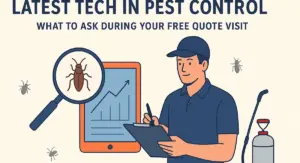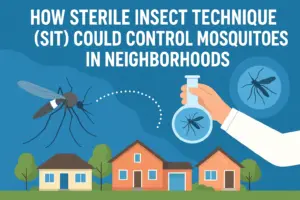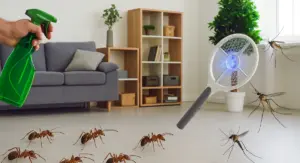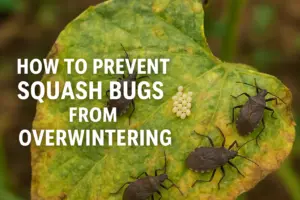Termites can be quietly destructive. They don’t make noise. They don’t give warnings. By the time you notice the damage, they may have already caused thousands of dollars in repairs. Whether you own a home, manage rental properties, or handle commercial buildings, understanding early signs of termite activity can save time, money, and stress.
Let’s walk through what you need to look for, and why early detection matters.
Why Termites Are a Bigger Threat Than You Think
Termites don’t just eat wood, they eat away at the structure of your property. They’re active year-round and can go undetected for months, even years. While some pests leave obvious clues, termites operate in silence.
According to pest control experts, termites damage over 600,000 homes each year in the U.S. alone. That’s more than fires and storms combined. And homeowner’s insurance usually doesn’t cover termite-related costs.
Knowing what to look for early can help you avoid expensive surprises later.
What Are the Early Signs of Termite Damage?
Not all termite signs are dramatic. In fact, most early indicators are subtle. Here’s what you should keep an eye on:
1. Mud Tubes Along Walls or Foundations
Subterranean termites use mud tubes to travel safely from the ground to their food source. These pencil-sized tubes often appear on:
- Basement walls
- Crawl spaces
- Foundation edges
- Behind siding or drywall
Break one open. If you see live termites inside, it’s an active infestation.
Subterranean termite control services can address this early.
2. Hollow-Sounding Wood
Tap on your wood flooring, baseboards, or walls. Does it sound hollow? Termites chew wood from the inside out, leaving just a thin outer layer. This can make the wood feel soft or give way under slight pressure.
Common spots include:
- Window and door frames
- Wooden beams
- Staircases
Professional termite inspections are essential if you suspect hidden damage.
3. Bubbling or Peeling Paint
You might think it’s just water damage, but termite activity can cause paint to bubble or peel. That’s because termites produce moisture as they digest wood. Look for:
- Warped paint or wallpaper
- Small pinholes in drywall
- Unexpected stains
Termite damage repair should follow any treatment to restore affected areas.
4. Discarded Wings Near Windows or Doors
When termites swarm to start new colonies, they shed their wings. You’ll often find these near:
- Windowsills
- Entry doors
- Light fixtures
This is a red flag. A termite swarm means a colony is nearby—or already inside.
Termite swarm treatment may be required immediately.
5. Noisy Walls at Night
It sounds strange, but termites do make noise. Soldiers bang their heads to warn the colony of danger. If you listen closely at night, especially near infested wood, you might hear:
- Clicking or tapping sounds
- Rustling within walls
This usually means the infestation is advanced.
Call a local pest control expert to investigate and confirm.
6. Tight-Fitting Doors and Hard-to-Open Windows
As termites chew through wooden frames, they create moisture and warping. This can cause:
- Doors that suddenly stick
- Windows that don’t close smoothly
It may feel like your house is settling, but it might be termites.
Early termite inspection can clarify the cause.
Areas Most at Risk
Termites love dark, damp environments. While every building is vulnerable, some areas are more likely to attract them:
Indoors:
- Basements and crawl spaces
- Attics with exposed wood
- Kitchens and bathrooms with leaks
Outdoors:
- Mulch near the foundation
- Firewood stacked against the house
- Wooden fences or decks
Moisture control and pest prevention steps can reduce risk in these areas.
Types of Termites and What They Target
Understanding the type of termite helps in spotting the right signs.
Subterranean Termites
- Live underground
- Build mud tubes
- Common in North America
These are the most destructive and need subterranean termite treatment.
Drywood Termites
- Don’t need soil contact
- Infest furniture and hardwood
- Found in coastal and southern areas
Drywood termite removal services are often more targeted.
Dampwood Termites
- Prefer moist wood
- Often seen in forested or humid zones
- Rare in homes, but not impossible
Dampwood termite detection requires professional evaluation.
How to Confirm Termite Activity
If you suspect termites, it’s best not to guess. Here’s what you can do:
- Use a flashlight: Check dark corners, basements, and attic joists.
- Poke wooden areas: Gently press with a screwdriver or knife.
- Call a pest inspector: Professionals use thermal imaging and moisture meters.
A licensed inspection can tell you if you’re dealing with old damage or an active colony.
Schedule a termite inspection to get an accurate report.
What Happens If You Wait Too Long?
Ignoring the signs of termites can lead to serious consequences:
- Structural instability
- Expensive foundation repairs
- Reduced property value
- Damage to walls, floors, and ceilings
- Legal liabilities in rentals or commercial properties
In commercial settings, termite damage can also disrupt business operations and affect safety compliance.
Commercial termite control services are vital for business properties.
Prevention Tips to Protect Your Property
The best way to deal with termites? Stop them before they start. Here’s how:
Reduce Moisture:
- Fix leaks in pipes, roofs, and HVAC systems
- Use a dehumidifier in crawl spaces
Keep Wood Away from Soil:
- Maintain a gap between wood and the ground
- Store firewood off the ground and away from the building
Seal Entry Points:
- Caulk cracks around windows, doors, and foundations
- Install mesh screens over vents
Schedule Annual Inspections:
- Regular termite checks help detect problems early
- Professional pest control companies offer warranties and follow-up
Annual termite inspections are a small investment with big returns.
What to Do If You Find Termites
If you find signs of termite damage:
- Don’t disturb the colony—disturbing them can cause them to scatter.
- Call a licensed pest control provider—get a detailed inspection.
- Ask for a treatment plan—options include bait systems, soil treatments, or localized wood treatment.
- Repair the damage after treatment—fix wood, seal openings, and reinforce structures.
You can book termite control services online quickly with trusted local providers.
Final Thoughts
Termites are quiet invaders. They don’t break in with noise, but they leave destruction in their path. The early signs may seem small, paint bubbles, a stiff window, a few wings on the sill, but they signal a bigger problem beneath the surface.
Whether you’re protecting a family home, a rental property, or a commercial space, staying alert to these signs makes a difference. A bit of vigilance today could save you thousands in the future.
Take action at the first sign of termites, because with pests, what you don’t see can hurt you.









